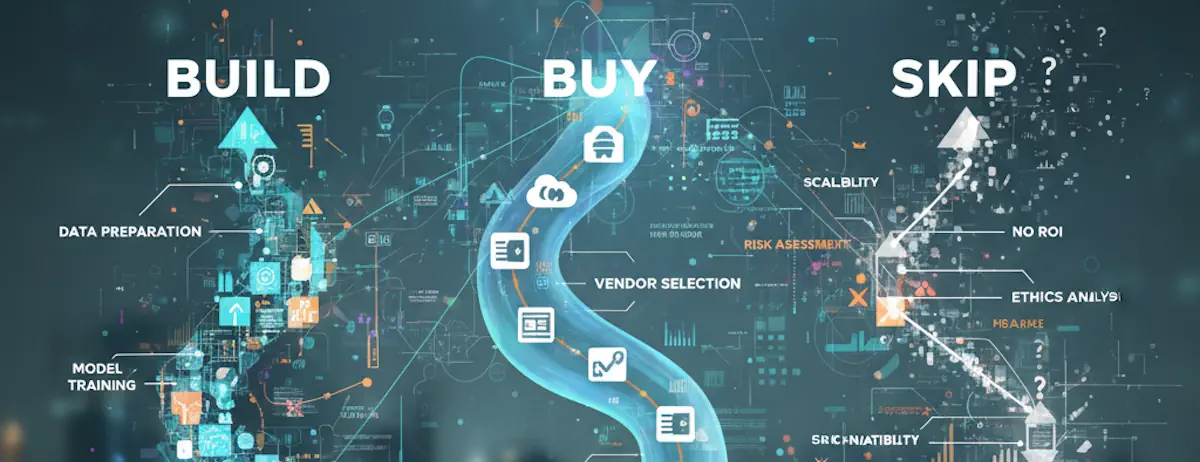Redefining Startup Innovation with AI
From months to a weekend--changing what's possible for startups.

I watched a team at a recent hackathon build a functional app in 18 hours. Not a mockup or proof-of-concept—a working application with AI-powered fraud detection, real-time transaction processing, and a polished responsive interface. Three people, one very long day, and nearly production-ready code.
Five years ago, that same app (to that level of fidelity) would have taken a team of eight engineers six months to build.
We’re in a New Era
The data emerging from 2025 is staggering. AI-enhanced low-code platforms are reducing development time by up to 90%, with 70% of new applications now built using these tools. Teams report 25-75% faster time to market, and 72% of organizations can now develop apps in three months or less.
But behind these statistics lies a fundamental shift: we’re moving from Minimum Viable Products to Minimum Lovable Products—and we’re doing it at unprecedented speed.
Quality vs. Speed: The Real-World Test
But here’s the critical question: are these rapid prototypes actually production-ready?
The answer is more nuanced than the productivity metrics suggest. Recent analysis shows that while 72% of organizations can develop apps in under three months using AI-enhanced tools, the quality conversation has shifted. Instead of asking “Is the code perfect?” teams now ask “Is it good enough to learn from real users?”
Modern AI development platforms increasingly generate production-quality code. Schneider Electric deployed 60 applications in 20 months using low-code platforms, achieving 253% ROI. thinkmoney built a mobile banking app in 14 weeks—not a prototype, but a regulated financial application serving real customers.
The quality bar has become contextual: good enough to ship, learn, and iterate rather than perfect from launch.
The Development Speed Revolution
• Custom integrations
• Extensive testing
• Infrastructure setup
• Pre-built integrations
• Automated testing
• Cloud-native deployment
The Strategic Implications Are Massive
This isn’t just about coding faster. The compression of innovation cycles is reshaping fundamental business strategies:
Focus on Core Differentiators: This acceleration is liberating companies to focus on what actually makes them unique. Warby Parker revolutionized eyewear through direct-to-consumer experience and try-at-home innovation—not by building the world’s best e-commerce platform. Casper disrupted mattresses through sleep science and customer experience—not by creating superior inventory management systems.
AI-enhanced development means a sustainable home goods startup can focus on sourcing, product design, and customer relationships while their mobile app and online presence are built rapidly using proven platforms. The technical infrastructure becomes a solved problem rather than a competitive differentiator.
Market Responsiveness: When healthcare companies can deploy telemedicine apps in weeks instead of months, and retail companies can launch personalized shopping experiences in response to real-time trend data, competitive advantages become temporary by design.
Capital Efficiency: Startups can now validate multiple product directions with the same resources that used to fund one. Teams test five different market approaches in the time it used to take to build one prototype.
Risk Mitigation: The “build it and they will come” mentality is dead. Teams can now afford to build multiple versions, test with real users, and pivot based on actual data rather than assumptions.
The Hidden Challenge: Speed vs. Sustainability
But here’s what the productivity metrics don’t capture: technical debt is accelerating alongside development speed.
In my consulting work, I’m seeing startups that built impressive prototypes in weeks but can’t scale them effectively. The same AI tools that generate code quickly sometimes create architectures that work beautifully for demos but break under real-world load.
The patterns I’m seeing:
- Prototype debt: AI-generated code optimized for speed, not maintainability
- Integration brittleness: Pre-built connectors that work until you need customization
- Scale surprises: Applications that perform well in development but struggle in production
The New Development Playbook
Based on what’s working in practice, here’s the emerging playbook for AI-enhanced startup development:
Start with AI, plan for human intervention. Use AI tools to rapidly prototype and validate core concepts, but budget for human refinement before scaling. The sweet spot seems to be 70% AI-generated foundation with 30% expert polish.
Design for modularity from day one. Since you can iterate quickly, build systems that can be easily modified or replaced. The ability to swap components rapidly becomes more valuable than optimizing individual pieces.
Validate early, validate often. With faster development cycles, you can afford to test multiple approaches with real users. Don’t spend months perfecting a solution—build three versions and let user behavior guide optimization.
Plan your technical debt strategy. Accept that AI-generated code will need refactoring. Set aside 25-30% of your development budget for cleanup and optimization as you scale.
Industries Leading the Charge
Healthcare, retail, and financial services are seeing the most dramatic time savings, primarily because their digital transformation needs align perfectly with AI development strengths:
- Healthcare: Telemedicine platforms that once required specialized compliance expertise can now be built using AI tools that understand HIPAA requirements automatically
- Retail: Personalization engines that required machine learning teams are now configurable through natural language interfaces
- FinTech: Payment processing and fraud detection systems that demanded years of domain expertise can be assembled from AI-powered components
These sectors are experiencing up to 75% reduction in time to market because AI tools have learned to handle their complex regulatory and integration requirements.
What This Means for Product Strategy
We’re entering an era where time to learning matters more than time to perfection. The companies winning aren’t necessarily building the best initial products—they’re building the fastest learning loops.
The implication for product leaders: Your job is shifting from optimizing single product cycles to optimizing learning velocity. How quickly can you test hypotheses? How rapidly can you incorporate user feedback? How fast can you pivot when data contradicts assumptions?
For technical leaders: The focus moves from writing perfect code to building perfect feedback mechanisms. Observability, user analytics, and A/B testing infrastructure become more critical than elegant algorithms.
For business leaders: Capital allocation strategies need to account for compressed innovation cycles. Budget for exploration, not just execution.
The Bottom Line
AI-enhanced development isn’t just making things faster—it’s making different things possible. When a three-person team can build and deploy a sophisticated application in weeks, the constraints that shaped business strategy for decades start to disappear.
The startups thriving in this environment aren’t necessarily the ones with the best initial ideas. They’re the ones that can iterate, learn, and adapt fastest.
The question for every startup leader: Are you optimizing for your first version, or for your tenth?








